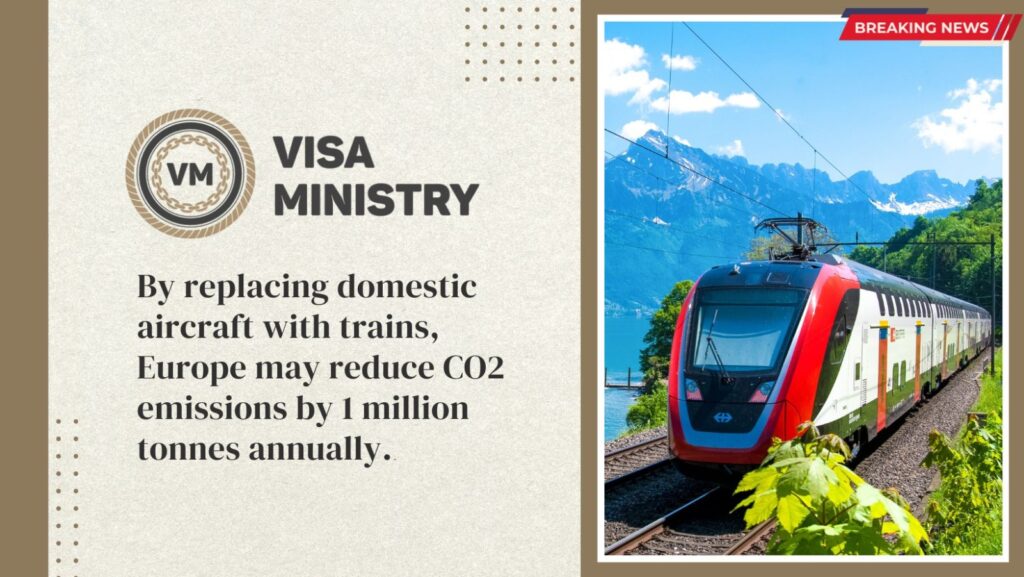High-speed trains might potentially replace domestic flights on shorter, up to 500 km, routes, according to research done by Mabrian Technologies, a business that specialises in travel intelligence.
The study examines the reductions in CO2 emissions that would occur if numerous European nations adopted the law, which has already begun to be implemented in France.
There are 554 such routes in Europe, which will carry around 44 million passengers and generate about 2.3 million tonnes of CO2 this year, according to the analysis, which has examined the whole air schedule for 2023 on domestic routes with ground distances of less than 500km.
Using high-speed trains could minimise this environmental impact by an average of 48% due to their superior emissions efficiency. As a result, more than 1 million tonnes of CO2 would be saved in just one year, which is the same as running more than 200,000 cars nonstop for a full year.
Following the methods outlined in the EcoPassenger report, Mabrian has examined the type of electrical energy and its sources used to power the train infrastructure in each European nation in order to compare emissions.
Using clean and green technologies, this lays out an ambitious transition towards sustainable mobility. In terms of these policies, certain nations stand out more than others. Germany, for instance, has made investments to upgrade its rail network and embrace cleaner technology that promote train travel as a more environmentally friendly option than flying, hence lowering carbon emissions. Sweden has been a leader in the use of renewable energy for rail travel, including hydropower and wind power.
The analysis identifies five European nations that, in the event that this transformation occurred, would save the most CO2. Spain tops the list, with a potential annual CO2 savings of 360,000 tonnes if these routes were replaced by high-speed trains. Germany comes in second with a potential annual CO2 savings of 238,000 tonnes, followed by France with 193,000 tonnes, Italy with 189,000 tonnes, and Sweden with 159,000 tonnes.
In contrast, Sweden, Austria, and France have the most potential CO2 reductions from the switch to rail, accounting for 97.13%, 92.79%, and 89.73%, respectively, of the annual total CO2 produced by aviation. In fact, France was the first nation to use this safeguard on short-haul flights departing from Orly.
Mabrian claims that the potential savings would be substantially higher if all air routes of 500km or fewer joining different countries in Europe were also taken into account, despite the fact that all of this analysis has solely focused on domestic air routes inside each country.
The study also emphasises the value of examining a number of factors that are not totally supportive of this transition. Not all nations may have the financial means to develop the expensive train infrastructure necessary to cover every one of these routes. It would also be necessary to take into account the long-term profitability and the potential of these new infrastructures to accommodate a sizable demand.
The marketing director of Mabrian, Carlos Cendra, says: “While this study may sound idealistic or impossible to accomplish, at Mabrian we believe in proving the effectiveness of choices through statistics. We have calculated the possible savings from moving in that way using this analysis. The backdrop and the challenges presented by this transformation, however, point to a middle ground where the train takes the stage while still meeting some demand through aeroplanes.
Source- Travel daily

